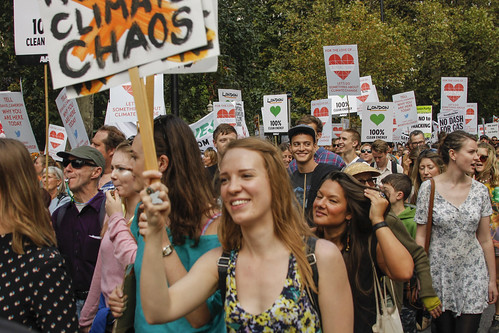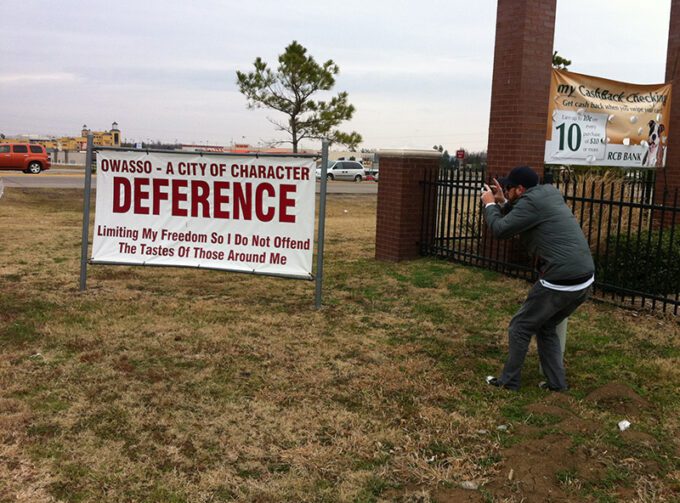
Observing is one of the most fun parts of being a design researcher. Here are some tips to help as you embark on people-watching and discovering with a design purpose.
You are the Scientific Instrument
In Look: A Practical Guide for Improving Your Observational Skills, James Gilmore presents a wide range of lenses to use when observing. Some lenses reveal small, seemingly insignificant details. Others show the big picture and connections. Use all the lenses to experience the place. Try to see the hidden stories like a writer does when they do research for a novel. Become Sherlock Holmes and notice seemingly invisible details that reveal what’s really going on in the place. Back away and see connections. Look with your nose, eyes, ears… all your senses. After you’ve sensed… make connections. For example:
Let’s say you visit a thrift store and notice stained ceiling tiles. This likely indicates there was once a roof leak. Now let’s say you also notice stained, crusty carpet directly beneath the tiles. That roof leak looks like it was a bad one. Let’s take that one step further… what if store inventory in the area of the leak like teapots and coffee mugs are still splashed and stained with dust and dirt? That may mean the employees or store owner have never noticed the leak, may not be able to afford to fix it, or they may not even care.
That’s when you could look around the rest of the store for any indication that maintenance has been neglected or that the place may be running on a shoestring budget. Maybe the place is cold and they aren’t running a heater so you and everyone else in the place are shivering and wearing coats inside. This could be another possible sign of lack of funds to fix the place to the level that creature comforts aren’t offered. In this case, maybe check the public bathrooms… that’s a place where a store has to spend money but gets very little in return for it in the way of profit. A bathroom is a “creature comfort” that’s a necessity, but a sparkling clean bathroom takes a lot of work to maintain well. A clean bathroom shows a store cares about some of the smaller details that may not always lead to more sales.
After such an observation, you may have a better idea of where a need is for design. When doing this work, don’t just look at the place, but consider the people in it. How are they behaving? Are they having a hard time finding things? Are there smiles on their faces? How’s their shopping experience, based on body language, the fullness of their shopping carts, or the lines at the cash register? Once you triangulate all of the factors you can sense, you may have a hunch for where design is needed and where more research should be conducted to find out what kind and how.
Abductive Reasoning
What we’re talking about here with observation-based hunches is abductive reasoning. This kind of reasoning doesn’t produce truth… just the best prediction which may be true. For exploratory research like we’re doing, that’s good enough. No, you would never use the product of abductive reasoning to make healthcare or big business decisions, but it is good for revealing where to spend your time when you jump to inductive reasoning which is often the best we’ve got when it comes to social science research, though there’s room for deductive reasoning. The product of your experience should be a conclusion (a hunch, really) that’s produced through abductive reasoning.
Observe Many Dynamics
In order to observe as deeply and broadly as possible, you have to be aware of what’s going on around you. That’s easier said than done. In cultural anthropology, participant observation is the gold standard of field research. Researchers live with a people group for months, maybe even years, to learn their ways and observe how these people react in different circumstances. Human-centered design agency IDEO has had its design researchers live with families for a weekend to learn their laundry habits for design research. There is no substitution for “being there” when observing cultural groups and scenarios.
Biker groups, IKEA employees, people who play the video game Overwatch, climate change protesters, Clinique beauty product counter-workers, and Astros Fans are all people groups that have unique cultures. People in these groups behave according to cultural norms that have developed over time. An Astros baseball fan knows to say “Go ‘Stros” as a cheer; biker groups know that black leathers are both safety gear and dress that signifies their belonging to the group. To sense this stuff, you must use all your senses and know what to look for.
Guides for Observing
It can be hard to know what to look for when conducting observations. After all, the charge to “record everything!” is not about as non-specific as you can get. When you code your observation data, themes will emerge but for now, just grab it all. The POEMS, AEIOU, and Five Human Factors observations frameworks are helpful guides to guide your observations. Try to capture enough visual evidence so that when it’s time to code, the following will be in the data.
| POEMS | AEIOU | Five human factors |
| People | Activities | Physical |
| Objects | Environments | Cognitive |
| Environment | Interactions | Social |
| Materials | Objects | Cultural |
| Systems | Users | Affective |
Don’t be Weird
When observing, try not to stick out like you’re observing. Relax. Try to fit in as someone who belongs so as not to draw attention to yourself, disturbing the place you’re observing and, in turn, invalidating the experience. If you fit in, people will not notice you and will be less likely to behave differently. When you’re recording notes, do it discretely.
Try Doing What You Are Observing
If you want to learn how something specific feels or how a place shapes experience, choose an activity in the place you’re observing. Try riding a bus, taking out the trash, or rolling down a ramp in a wheelchair. Try doing an activity with a child in tow or on a rainy day. Selecting a specific action to do while you’re in a place will reveal a lot about how easy or challenging the design of the place makes your actions. For instance, going to a jazz club when no one is there will tell you a lot about the place, sure. But buying a ticket online, having to park, carrying an umbrella, then stowing it as you get to the busy show will reveal a lot about the jazz-going experience you couldn’t get if you just went to the place.
Record What You Found in Detail

Take field notes. Make drawings, take photos (remember, don’t be weird), record sounds, write, write, write lots of notes and descriptions. Record smells, sounds, what the temperature was, how loud it was in the room, which languages were being spoken, how many bananas were in the basket, the humidity… everything. The things you record will be material for you to look at days, maybe even years after the experience. While you are recording field notes, some details may seem unimportant. Record them, anyway. Because if you miss that detail about a 4-year-old girl not being able to use a miniature golf club because it was too long, the potential to fix it (and improve her experience) will be forever lost.
If you don’t record it, it didn’t happen. You can’t go back and recreate an experience and trust me, you will not remember everything and all the rich details after observations have concluded.
Be Curious
Field research is your chance to wander and wonder. Be curious. Explore. Document the world and capture its uniqueness across the entire spectrum. Your job is to capture a moment in time exactly as it happened. If you point your eyes and senses at interesting and unexpected things, you will find the unexpected.
If you point your eyes and senses at the mundane, you’ll likely discover that when it comes to people and design, the facts are stranger than fiction.
Conclusion
When it comes to observations and documentation, nothing is off-limits. Sound, video, images, drawings, writing… it’s all good. If you don’t document it while you’re there, you can never get it back. And never “make up” what you think happened because it probably didn’t.
Practice looking from as many perspectives as possible. See the world through the eyes of a child and do not assume anything. You may see something you never expected!




